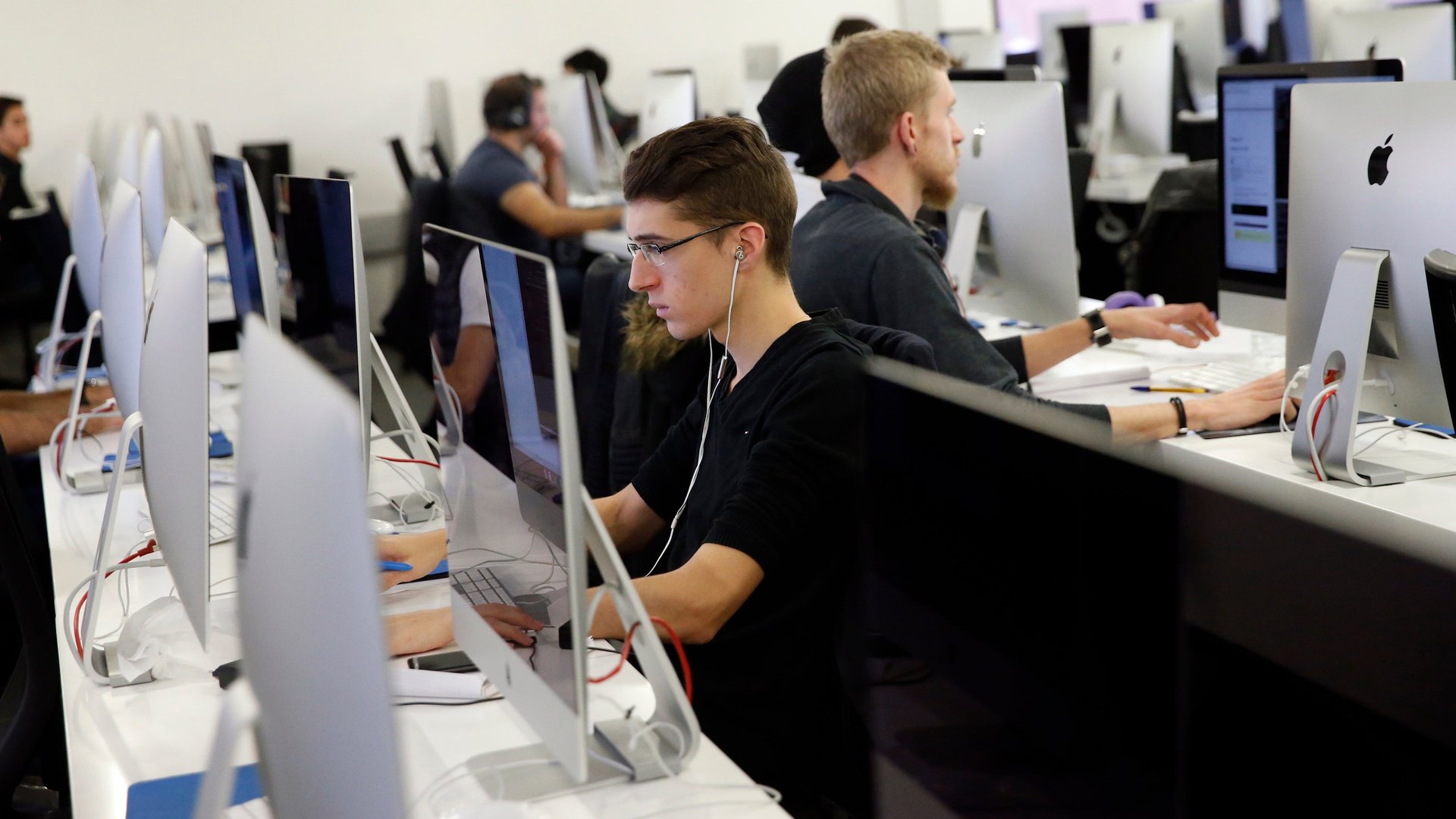US professors aren’t getting any more accepting of online learning—but students definitely are
Online education comes with plenty of drawbacks. The cons tend to amplify when schools try to integrate e-learning into a broader bricks-and-mortar college experience: Students are said to get bored, learn less, or absorb only a portion of the intellectual atmosphere they’d find in physical classrooms.


Online education comes with plenty of drawbacks. The cons tend to amplify when schools try to integrate e-learning into a broader bricks-and-mortar college experience: Students are said to get bored, learn less, or absorb only a portion of the intellectual atmosphere they’d find in physical classrooms.
Despite all that, online learning as part of university programs—also known as distance learning—has managed to wrangle more than a decade of continuous growth, according to an annual update from the Babson Research Group, which has tracked online education in the US since 2002. That’s even as higher education enrollment in the country in general is dropping.
Babson’s report, co-produced with educational institutions like Pearson and the Online Learning Consortium, found the number of university students taking at least one distance-learning course was 3.9% higher in 2015 than in 2014—an uptick that marks 13 years of nonstop growth for the field.
There’s one major factor driving online learning’s expansion, Jeff Seaman, co-director of the research group, tells Quartz. ”The universal appeal is access,” he says. “It’s not that online is inherently better or worse—it’s that taking a course online allows you to complete a program you couldn’t otherwise.”
But the growth in enrollment, more rapid when the concept of e-learning first launched but in no danger of plateauing anytime soon, isn’t coming from e-learning enthusiasm within academia. Not even a third of all schools surveyed in Babson’s report said they have faculty members who “accept the value and legitimacy of online education.”
And that data point hasn’t changed much since the survey began.
Comparing a) online learning’s continuous growth and b) US professors’ ongoing skepticism toward the idea reveals a bit about where the growth is coming from—and highlights just how much universities are run like businesses these days. Expansions in online course offerings by traditional institutions clearly are “top-down” decisions made by administrators for the sake of “reaching their target audience,” Seaman says; faculty members, many of whom worry that online learning may diminish the quality of teaching or even their paychecks, aren’t getting much of a say.
Asked whether faculty attitudes represented “a significant obstacle to further growth of online education” at their schools, only 32% of chief academic officers surveyed in the Babson study agreed with the statement; 51% were neutral, and 17% disagreed.
If growth in college-level online education is to go off track anytime soon, it will be the cause of “some external factor,” Seaman predicts: perhaps a federal policy change, or a financial or economic shift that alters the affordability of higher education. But it won’t be because professors don’t like it.